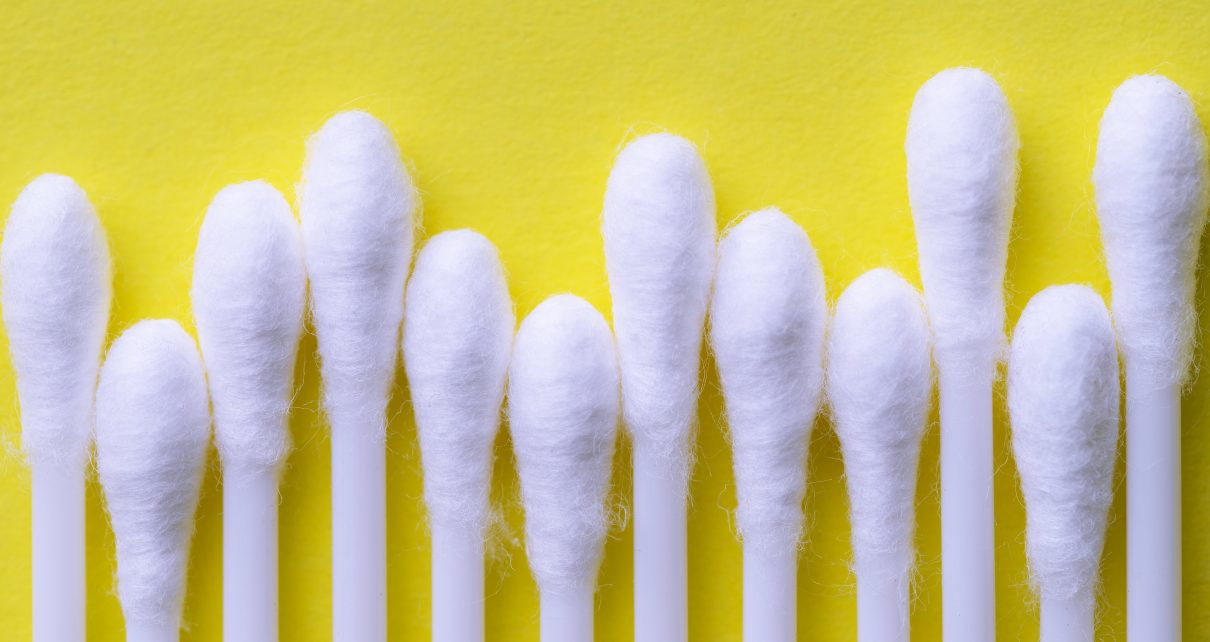The U.S. Food and Drug Administration authorized the first at-home collection kits for novel coronavirus testing this week. The kits, made by the Burlington, N. C.–based company LabCorp, allow patients to swab their own nasal passages and mail the samples back to one of the company’s laboratories for analysis—without setting foot in a hospital or clinic. The method’s risk of false negative results, as well as its cost and limited availability, may hinder its widespread use. But some experts say the kits could still help address the shortage of testing needed to contain the outbreak and reopen society.
The home-collection kit, called Pixel by LabCorp, will initially be available only to health care workers and first responders who have possibly been exposed to the virus. The company plans to scale up production for wider public use in the coming weeks. To obtain a test, an individual must first fill out a questionnaire, which is then reviewed by a physician. If that expert deems it necessary, a kit will be mailed to the person. Each one contains a set of cotton swabs and a test tube of saline solution to put them in, along with directions for how to package and return the sample via commercial overnight delivery.
Unlike the notoriously long nasopharyngeal swabs that trained health care workers insert deep into people’s nasal passage in most current COVID-19 tests, the home kit utilizes a shorter, Q-tip–like swab. A patient inserts the stick until it contacts the back of his or her nose and then rotates it three times to absorb secretions. Although much less uncomfortable, the shorter swab may not capture enough virus to be detected by the test and thus yield a false negative result. There are multiple reasons you could have a negative swab, according to Marcia Eisenberg, LabCorp’s chief scientific officer. “In order to actually pick up the virus at the time that you’re doing a collection, the person has to be shedding virus,” she says. “As far as the actual collection itself, we don’t always necessarily know whether or not there has been a good sample collected and whether or not it was held appropriately and shipped appropriately.” The kit does include an internal control that helps LabCorp determine whether a sufficient sample was obtained, Eisenberg notes.
Each kit costs $119, and the person ordering it will have to pay. LabCorp currently has about 65,000 home collection kits available and plans to produce more, a company spokesperson says. The turnaround time is about one to two days from specimen pickup to results.
Scientific American spoke to diagnostics expert David Walt about the accuracy of at-home sample collection. Walt, a professor of pathology at Brigham and Women’s Hospital and co-director of the recently founded Mass General Brigham Center for COVID Innovation, also weighed in on the risk of infection by mail and the need for more testing in general.
[An edited transcript of the conversation follows.]
What do you make of this new at-home COVID-19 test kit?
It’s not really a test. It’s just a collection device. That’s an important thing to distinguish: that they’re enabling individuals to essentially collect samples and perform the nasal swab at home with a slightly shorter device, so that it’s not as intrusive and much more pleasant than what one would get normally. It’s a way to collect a sample and then preserve it so that you can mail it and have LabCorp run the standard molecular test in its clinical lab.
And there are significant merits, because people can stay at home—they can fill out a form and, if they’re eligible, the kits are mailed to them. And then they know they don’t have to go out and potentially infect other people. Most people who show up in the emergency room to get tested have symptoms, and there are COVID-19 patients there that have the potential to infect them, and vice versa. So it’s a safer way to do things. It’s also a more distributed way, where you’re bringing the diagnostic capability to the consumer rather than trying to bring the consumer to the collection site or to the diagnostic laboratory. I’m very much in favor of this approach.
As the pandemic unfolds, we’re already seeing some [testing] platforms that are being put out that might be more purposed for doctor’s offices, urgent care centers or local pharmacies. And then the next step after that would be to actually get little test strips into people’s homes, so they can not only test, but they can test frequently. Because ultimately what’s going to get everybody back to work and get us back to a more normal society is being able to test and retest.
With any coronavirus test, there’s the potential for false negatives if the swab does not pick up enough virus—or even if there is just a low viral load, or amount of the virus. Do you think this possibility is a risk with this particular test, especially because of the shorter swab?
I think there are two answers to the question. The first is that it’s likely that there is sort of a gradient—that as you go closer to the lung, the more concentrated the virus is going to be. So one would predict that there is probably less virus, the shorter the swab. I think that that’s a very reasonable hypothesis.
But the second part of my answer is that the existing test [could have a risk of false negatives as well. If it has, say, a] specificity of only 70 percent, plus or minus, anyway, you’re already getting 30 percent false negatives. So if you’re right 70 percent of the time, and you’re missing a few people, you’re still better off because you’re reducing the number of people going into a grocery store or whatever. If they know they have the virus, they can then quarantine. And overall, you’re better off.
Maybe there’s a third piece to it, and that’s that if the barrier is low to getting these tests, then it’s much better to test more people with a test that is perhaps not as accurate as something that would be available if you went to the emergency room. You’re a lot better off testing 10 times as many people and catching those people that come back positive than you are trying to be perfect.
There are videos of how far back health care workers have to push a nasopharyngeal swab into someone’s nasal passage. Would the average person be able to get a good enough sample?
I don’t think you’d get people to [use one of the longer] nasopharyngeal swabs. I would actually think that there may be some serious adverse risk if you have a bunch of people with bloody noses or palates that have been damaged as a consequence of improper self-administration. I think that the risk of transmitting [the virus] would go up potentially exponentially if you’ve got a bunch of people showing up in the emergency room for things that are not relevant to COVID-19 but are a strain on the health care system.
One of the problems with testing has been the turnaround time. Could it be an issue if people are mailing stuff in themselves?
I don’t know. LabCorp and Quest Diagnostics do most of the [standard] clinical tests across the country already. So I would think that, with the reduced requests that are coming in for other things these days, [LabCorp has] built up the capacity before they launched this to be able to return results in a reasonable period of time.
This is not the perfect solution. But it’s better than the way we’ve been doing things over the last month—which is having to set up collection centers and having people suit up in [personal protective equipment] and having to change gloves and masks with every person that they sample to avoid contaminating both themselves and the next person in line. So I think this makes a lot sense, and I’m glad to see it. It’s not an at-home diagnostic test—it’s at-home sample collection. So that’s as far as it goes. And it’s a good step that does not require the level of validation that [fully] at-home tests will require.
If people are doing these collections at home and handling swabs—potentially with virus on them—and mailing them, is there any risk of infection through the mail?
Yeah, it absolutely is a potential risk. But you’re not at risk to infect yourself, you’re a risk to others. I would be almost certain that there are instructions as part of the packets that indicate how you handle [the swab]. But obviously there are going to be precautions that need to be taken. And there’s certainly a risk that people who are cavalier about following those instructions can transmit things to other items that could potentially infect people. I would think that those same people are probably not taking precautions anyway and are the folks who are most unlikely to order one of these kits.
A good example is something like the Cologuard test—the test for colon cancer for which people collect a stool sample [at home]. And trust me, that’s a much messier procedure. The company [that makes those tests] has figured out how to set it up so that the sample is put into a certain kind of collection device, and then that’s sealed so that it doesn’t transmit bacteria. So I would think that that’s something LabCorp has been very careful about.
Read more about the coronavirus outbreak here.




